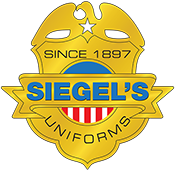Some experts claim that the advances in lightweight, concealable body armor has not kept up sufficiently with modern weapon technology. In fact, as weapons become more advanced, especially the increased power and automatic technology in modern firearms, it has become difficult to develop products capable of protecting against them. Law Enforcement officers, in particular, are of particular consideration, especially in high crime and violent areas. The key to developing adequate Body Armor lies in the development of “super fibers.” These advances in fiber are the key to developing new and effective technology. Fabric hybrids are currently being designed by many independent companies to perform exponentially better than any lightweight, concealable body armor before.
Some of the companies emerging ahead in this field include Armor Express, the Teijin group, and Atlantic tactical. In 2008, the Teijin Aramid group publicized a “super-fibers” expansion project. These companies highlight “computational chemistry” to develop an answer to high obstinacy without compromising strength. The materials science of second generation “super” fibers is complex, requires large monetary reserves, and involves overcoming significant technical challenges. One type of research seeks to cultivate imitation spider silk which could be super durable, yet lightweight and bends with movement. Other examinations have been done to harness nanotechnology developing extremely strong hybrid textiles that could be used in forthcoming lightweight, concealable body armor and used in bulletproof vests.
Finer yarns and lighter woven fabrics have been a key factor in improved ballistic results. The cost of ballistic fiber goes up dramatically as yarn size goes down, so it is unclear how long this trend can continue. Three-dimensional weaving with fibers connected, in a so called flat woven style together, form into a 3D system being considered for both hard and soft ballistics.
Law enforcement carriers in some countries are concealable. The carrier holds the ballistic panels close to the wearers’ body and a uniform shirt is worn over the carrier. This type of carrier must be designed to conform closely to the officer’s body shape. For concealable armor to conform to the body it must be correctly fitted to a particular individual. Many programs specify full custom measurement and manufacturing of armor panels and carriers to ensure good fit and comfort for concealable armor. Fit is also a key component of effective body armor. Officers who are either female or obese have more difficulty in getting accurately measured and having comfortable armor fabricated.
Increased demand for effective lightweight, concealable body armor in the Law Enforcement community has increased dramatically. Body armor and bulletproof vests are developed for all sorts of personal protection, including performing as defense, to protection from animals, or aggressive perpetrators. Companies like Armor Express are answering the call for the lightest, most flexible, and effective defense to safeguard officers in the most dangerous of situations.


